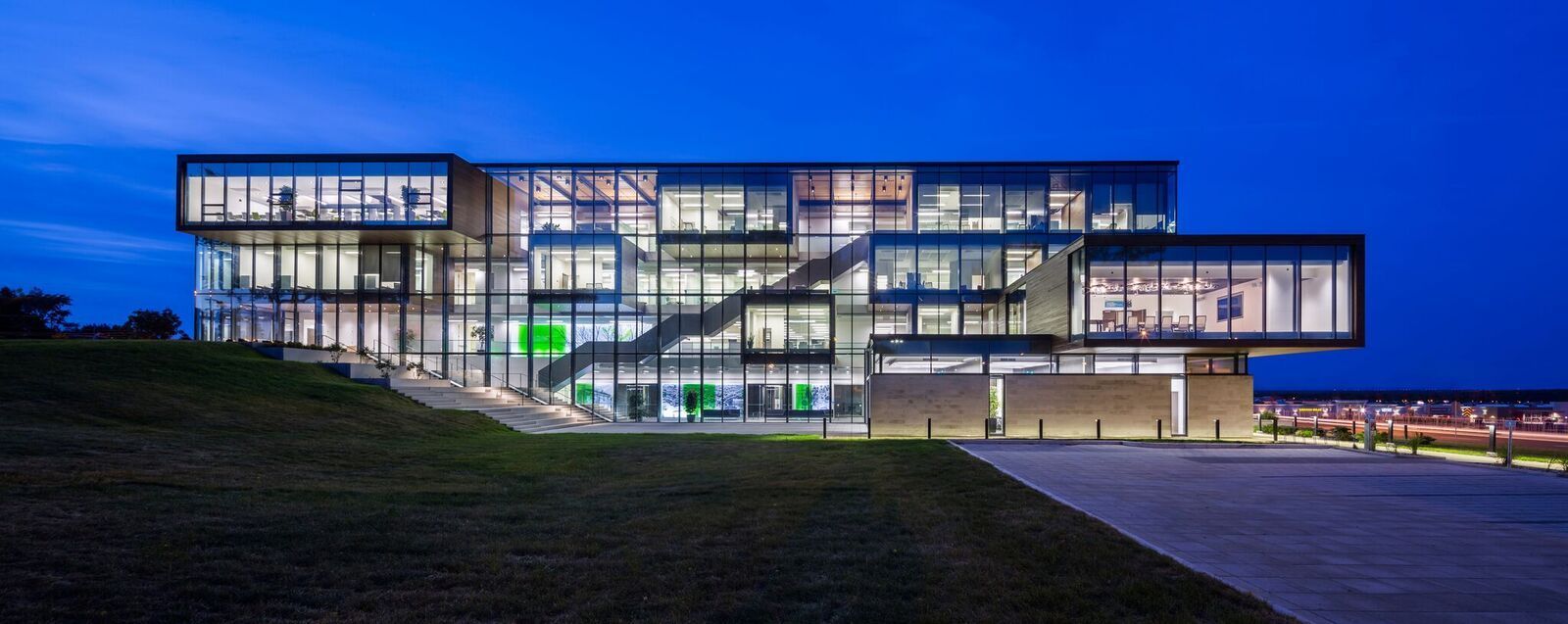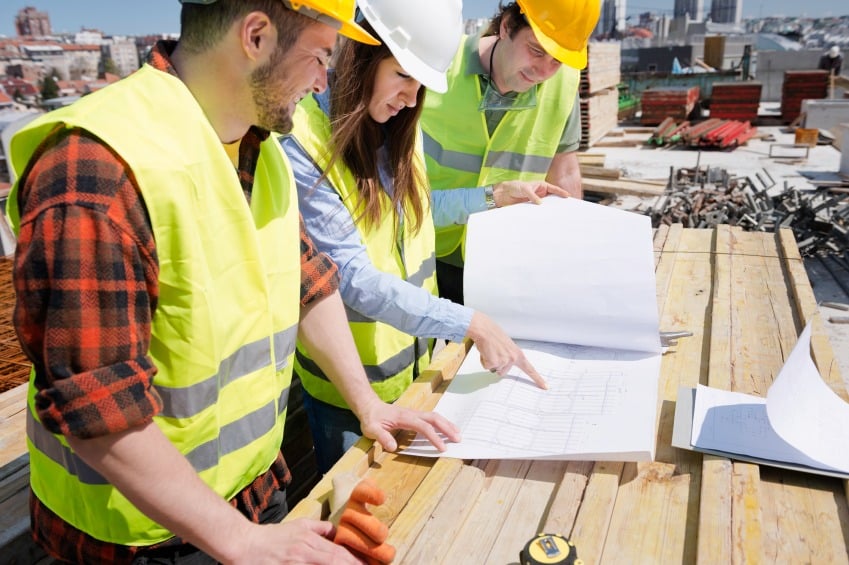

Increasing urbanisation, climate change and pressure on public sector budgets are just some of the issues facing our cities today. How can data and technology help? We supported the recent Smart Cities and Communities conference to share insight from industry leaders. Here’s what we learned:

There was consensus that a ‘digital by default’ approach should be adopted in order to ensure policy making is a citizen-centric process and provide a myriad of benefits to the market. Just some of the digital tools and technologies mentioned include:
City Information Models not only offer 3D visualisations of proposed changes to cities, but also use data to forecast how planning proposals will impact on air quality, social infrastructure and quality of life for citizens. This offers benefits to both developers who are able to save time and money using digital simulations of plans before work begins and to citizens who are engaged in the planning process much earlier on, avoiding negative reactions from communities.
AR is another technology being used to visualise new builds, amend proposals before work begins and aid community engagement by showing consequences, both good and bad, of proposed plans. This includes data about changes to business rates, the number of jobs that would be created, the environmental impact, which roads would need to be closed during building works and much more.
Geography (specifically location) is vital to successfully delivering key initiatives to make our cities smarter; there has to be a common frame of reference that is easily identified. GIS is already being used by many governments around the world to enable sharing of information securely and to engage citizens to make the community smarter.
Through GIS it is now possible to publish information about the status of key initiatives using engaging interactive maps and to crowd source from citizens to provide the data needed to target and focus the initiatives.
Will we be using chatbots to build planning applications in future? Stefan Webb, Head of Projects at Future Cities Catapult, argued that repetitive tasks involved with planning applications are likely to be automated in future, through the use of chatbots.
This means sharing live data and building API’s so that data can be used in a meaningful way to support data exchange and allow citizens to play a key role in governance.
As data and technology plays a bigger role in resolving some of the issues facing our cities today, the need for standards becomes more and more important.
For example, certain data sets and information should be used in the same way when making a planning application, yet currently everyone does the same thing in slightly different ways. Standards around information management would ensure a consistent and more efficient approach to these sorts of tasks.
There was consensus in the room that technology alone will not solve all of the current problems facing our cities today.
The skills and leadership abilities to implement the right technology at the right time are vital in creating smart cities.
Knowing your audience and understanding how citizens want services delivered is also vital. He suggests that things should be made EAST: Easy to implement; attractive to citizens; social (that is, social norms and networks should be considered) and timely.
Handforth also suggests that in order to create smart cities, leaders need to be tech savvy and brave enough to handle criticism as companies go through digital transformation.
We also need to ensure that everyone has the skills needed to adapt to new ways of working. This includes being data literate, which is not to say that everyone necessarily needs to know how to code but people will need to be comfortable analysing data. Other skills include being able to translate and communicate what is and isn’t working effectively as well as the ability to continually test, learn and adapt.
Handforth suggests that institutionalising skills and knowledge can save companies huge amounts of time and money in the long term, so investing in employees is crucial.
The main point driven home at the conference was that a smart city is one that delivers key initiatives derived from the aspirations of its citizens. What this really means is that organisations, both public and private, need to work together, share information securely and engage citizens in shaping and delivering key initiatives to ensure cities are effective and sustainable for generations to come.
With the continued and growing emphasis on sustainability in construction we could be on the verge of a radical shift in how we think about the current stock of buildings. The time may be coming when we stop planning for building replacement, and instead plan for building reuse. That in turn would significantly change the roles of designers and builders.
Pellentesque ornare sem lacinia quam venenatis vestibulum. Aenean lacinia bibendum nulla sed consectetur.Cras mattis consectetur purus sit amet fermentum. Sed posuere consectetur est at lobortis. Nulla vitae elit libero, a pharetra augue. Lorem ipsum dolor sit amet, consectetur adipiscing elit. Donec id elit non mi porta gravida at eget metus. Vestibulum id ligula porta felis euismod semper. Vestibulum id ligula porta felis euismod semper.
Commodo luctus, nisi erat porttitor ligula, eget lacinia odio sem nec elit. Integer posuere erat a ante venenatis dapibus posuere velit aliquet. Donec ullamcorper nulla non metus auctor fringilla.
Aenean eu leo quam. Pellentesque ornare sem lacinia quam venenatis vestibulum. Cum sociis natoque penatibus et magnis dis parturient montes, nascetur ridiculus mus. Duis mollis, est non commodo luctus, nisi erat porttitor ligula, eget lacinia odio sem nec elit. Integer posuere erat a ante venenatis dapibus posuere velit aliquet.

Pellentesque ornare sem lacinia quam venenatis vestibulum. Aenean lacinia bibendum nulla sed consectetur.Cras mattis consectetur purus sit amet fermentum. Sed posuere consectetur est at lobortis. Nulla vitae elit libero, a pharetra augue. Lorem ipsum dolor sit amet, consectetur adipiscing elit. Donec id elit non mi porta gravida at eget metus. Vestibulum id ligula porta felis euismod semper. Vestibulum id ligula porta felis euismod semper.
Aenean eu leo quam. Pellentesque ornare sem lacinia quam venenatis vestibulum. Cum sociis natoque penatibus et magnis dis parturient montes, nascetur ridiculus mus. Duis mollis, est non commodo luctus, nisi erat porttitor ligula, eget lacinia odio sem nec elit. Integer posuere erat a ante venenatis dapibus posuere velit aliquet.
Learn how to market your contractor business professionally. In depth knowledge of attracting clients with online marketing strategies and deep thinking about who you want your clients to be.
The housing industry has proceeded at a red-hot pace for several years running. An all-time record was set in 1998, when 886,000 new-site single family homes were sold. That represented a 10% gain from the robust total of 804,000 homes sold in 1997, and an 8.1% rise from the prior record of 819,000 units in 1977. Single-family housing construction accounted for $48 million of the total $125 million generated in the industry.

Pellentesque ornare sem lacinia quam venenatis vestibulum. Aenean lacinia bibendum nulla sed consectetur.Cras mattis consectetur purus sit amet fermentum. Sed posuere consectetur est at lobortis. Nulla vitae elit libero, a pharetra augue. Lorem ipsum dolor sit amet, consectetur adipiscing elit. Donec id elit non mi porta gravida at eget metus. Vestibulum id ligula porta felis euismod semper. Vestibulum id ligula porta felis euismod semper.
Commodo luctus, nisi erat porttitor ligula, eget lacinia odio sem nec elit. Integer posuere erat a ante venenatis dapibus posuere velit aliquet. Donec ullamcorper nulla non metus auctor fringilla.
Aenean eu leo quam. Pellentesque ornare sem lacinia quam venenatis vestibulum. Cum sociis natoque penatibus et magnis dis parturient montes, nascetur ridiculus mus. Duis mollis, est non commodo luctus, nisi erat porttitor ligula, eget lacinia odio sem nec elit. Integer posuere erat a ante venenatis dapibus posuere velit aliquet.
Pellentesque ornare sem lacinia quam venenatis vestibulum. Aenean lacinia bibendum nulla sed consectetur.Cras mattis consectetur purus sit amet fermentum. Sed posuere consectetur est at lobortis. Nulla vitae elit libero, a pharetra augue. Lorem ipsum dolor sit amet, consectetur adipiscing elit. Donec id elit non mi porta gravida at eget metus. Vestibulum id ligula porta felis euismod semper. Vestibulum id ligula porta felis euismod semper.
Aenean eu leo quam. Pellentesque ornare sem lacinia quam venenatis vestibulum. Cum sociis natoque penatibus et magnis dis parturient montes, nascetur ridiculus mus. Duis mollis, est non commodo luctus, nisi erat porttitor ligula, eget lacinia odio sem nec elit. Integer posuere erat a ante venenatis dapibus posuere velit aliquet.
Copyright 2022 by INNOVATECH All Rights Reserved.
